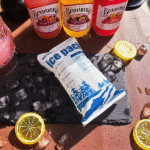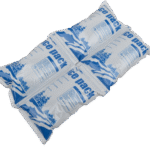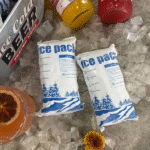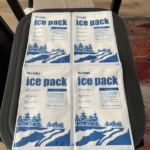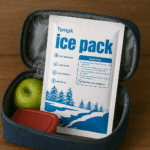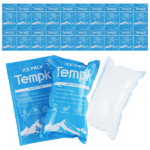Cold Chain Logistics in Malaysia: How It Drives Trade and Compliance?
Actualizado: Noviembre 18 2025
Malaysia’s cold chain logistics sector is transforming trade and healthcare. In recent years the market has grown rapidly with a projected compound annual growth rate (Tocón) de alrededor 8.5% entre 2023 y 2030. This growth is driven by rising demand for fresh food, pharmaceuticals and high quality exports. En 2025, Malaysia stands at the crossroads of global supply chains, investing heavily in technology, infrastructure and compliance to ensure temperature sensitive goods reach consumers safely. For exporters and domestic businesses alike, understanding the dynamics of cold chain logistics in Malaysia is essential to maintain competitiveness and meet stringent regulatory requirements.

Why are temperature controlled exports critical to Malaysia’s economy? — explore the role of durian, halal meat and vaccines in trade.
How is Malaysia building modern cold chain infrastructure? — learn about dedicated cold storage warehouses, IoT monitoring and 3PL services.
What regulations and certifications govern cold chain operations? — understand HACCP, ISO 22000 and halal logistics requirements.
Which challenges and opportunities shape the sector? — assess energy costs, last mile gaps and innovative solutions.
cuales son las ultimas 2025 trends and outlook? — discover AI, micro fulfillment and sustainability drivers.
What Makes Cold Chain Logistics Vital for Malaysia’s Export Growth?
Malaysia’s exports rely on cold chain logistics to maintain the safety and quality of perishable goods such as durian, mariscos, halal meat and pharmaceuticals. Perishable foods must be stored at controlled temperatures from farm to port to prevent spoilage and meet sanitary standards. Pharmaceutical exports, incluyendo vacunas y productos biológicos, often require ultra cold storage down to –80 °C. These demands highlight the importance of robust cold chain infrastructure and skilled operators to preserve product integrity and comply with international regulations.
The cold chain logistics market in Malaysia is rapidly expanding. Credence Research notes that the sector has been on an upward trajectory with an anticipated CAGR of 8.5% entre 2023 y 2030. Growth drivers include increasing demand for high quality and fresh products, shifting consumer preferences and stricter food safety and pharmaceutical standards. Government initiatives focus on reducing food waste and supporting exporters, while Malaysia’s strategic location in Southeast Asia offers access to neighbouring markets. For exporters of durian or halal certified meat, cold chain logistics ensures products meet destination country requirements and maintain premium value.
Key Temperature Sensitive Product Segments
Different product segments dominate Malaysia’s cold chain market. Perishable food products hold over 30% of total market value in 2022, driven by fresh produce, seafood and meat exports. El pharmaceutical and biotechnology products segment is projected to grow rapidly due to rising demand for vaccines and biologics. Transportation services account for over 28% of market demand, mientras camiones frigoríficos hold the largest share of more than 32%. The dominance of refrigerated trucks underscores the importance of road transport in connecting farms, factories and ports.
| Segment | Share & Crecimiento | Key Drivers | Significado práctico |
| Perishable food products | >30% of market value | Rising demand for fresh produce, mariscos, halal meat and dairy | Exporters must invest in reliable temperature controlled transport and storage to maintain freshness and meet export standards |
| Farmacéutico & biotechnology products | Fastest growing segment | Distribución de vacunas, biopharma manufacturing and strict GDP compliance | Requires ultra cold storage (often –80 °C) and regulated handling to ensure product efficacy |
| Transportation services | >28% of market demand | Need for reliable refrigerated trucks and containers | Businesses must select logistics partners with temperature controlled fleets and regulatory certifications |
Tips for Exporters
Plan early for peak seasons: Harvest cycles for durian, seafood and poultry can cause capacity crunches. Engage logistics partners early to secure refrigerated slots and avoid delays.
Use data loggers: Equip shipments with temperature loggers to provide real time evidence of compliance during customs checks and protect against disputes over quality.
Partner with certified providers: Work with freight forwarders and warehouses holding Good Distribution Practice (PIB), HACCP or halal certifications to assure buyers of product integrity.
Estudio de caso: A durian exporter in Pahang adopted IoT temperature sensors across its supply chain. By monitoring temperature at every stage, the company reduced spoilage rates by 20 %, gained faster clearance at Chinese ports and secured higher prices for “Musang King” durians.
How Is Malaysia Building a Modern Cold Chain Infrastructure?
Malaysia’s cold chain infrastructure has advanced significantly in the past decade. The country boasts dedicated cold storage warehouses in Port Klang, Penang and Johor, integration of real time temperature monitoring using IoT and blockchain, and a growing number of third party logistics (3Por favor) providers offering end to end cold chain services. Air cargo facilities such as the KLIA Perishable Centre have expanded to handle temperature sensitive air freight, while Free Industrial Zones and halal parks provide cold storage amenities for exporters.
Key players driving the sector include domestic providers like Ninja Van, Tiong Nam and GDex, which offer cold delivery services, and international forwarders such as DHL, Kuehne + Nagel and Bolloré Logistics, which operate temperature controlled freight services. Malaysia Airports Holdings Berhad oversees cold chain air cargo infrastructure at major airports, ensuring seamless handover between ground and air transport.
Emerging Technologies and Digital Innovations
The future of cold chain logistics in Malaysia is increasingly digital. According to FedEx, IA y análisis predictivo will optimize delivery routes, anticipate temperature deviations and prevent spoilage. Urban micro fulfillment hubs—compact cold storage facilities in city centres—enable same day delivery of fresh and frozen items, meeting growing e grocery demand. Blockchain and digital traceability platforms provide real time proof of origin and handling conditions, building trust with consumers. These innovations allow exporters and retailers to monitor every shipment, intervene promptly and showcase transparency.
Malaysia is also embracing sustainable technologies. FedEx highlights the adoption of electric delivery vehicles y green incentive programmes in Singapore and Malaysia, such as tax incentives for carbon capture and storage and refundable tax credits. Businesses that prioritize low carbon operations not only align with regulatory shifts but also appeal to eco conscious consumers.
| Innovación | Descripción | Beneficiarte para ti |
| IoT y monitoreo en tiempo real | Sensors track temperature and humidity throughout transport and storage | Ensures compliance, reduces spoilage and provides data evidence for customs and buyers |
| Optimización de rutas impulsada por IA | Predictive algorithms adjust routes based on traffic and weather | Acorta los plazos de entrega, reduces fuel consumption and keeps products within specified temperature ranges |
| Micro fulfillment hubs | Small cold storage facilities in urban areas | Enables same day delivery and supports e grocery and restaurant sectors |
| Trazabilidad de la cadena de bloques | Secure ledger records each handling event | Builds consumer trust and simplifies recall management |
| Green logistics incentives | Tax incentives and EV adoption | Lowers carbon footprint and may reduce operating costs through tax credits |
Practical Tips for Businesses
Invierte en plataformas digitales: Choose logistics partners that offer dashboards for real time monitoring. Access to data improves decision making and provides audit trails.
Explore micro fulfillment hubs: If you operate in Kuala Lumpur or Penang, partnering with hyperlocal cold storage facilities can shorten delivery windows and enhance customer satisfaction.
Leverage government incentives: In Singapore and Malaysia, take advantage of available tax incentives for carbon reduction and green technologies.
Ejemplo: A meal kit company in Kuala Lumpur partnered with a micro fulfillment provider and switched to electric vans. By optimizing routes with AI algorithms and using EVs, the firm cut delivery times from 5 horas para 2 hours and reduced its CO₂ emissions by nearly 30 %, attracting eco conscious subscribers.
Regulaciones, Standards and Halal Compliance: Lo que necesitas saber
Operating within Malaysia’s cold chain sector requires adherence to multiple regulations and standards. FedEx notes that food products may need to meet Hazard Analysis and Critical Control Point (HACCP) protocols, ISO 22000 standards or country specific guidelines. Navigating export requirements, especially for frozen food, demands cross border experience and meticulous documentation. Para productos farmacéuticos, Buena práctica de distribución (PIB) estándares, World Health Organisation (OMS) guidelines and IATA CEIV Pharma certifications ensure that temperature sensitive medicines maintain efficacy.
Malaysia is also a global leader in halal logistics. Specialized halal certified cold chains handle food and pharmaceuticals to ensure compliance with Islamic requirements. This capability positions Malaysian companies favorably in the rapidly growing global halal market, estimated at US$2 trillion worldwide. Exporters must ensure that their logistics partners maintain segregation between halal and non halal goods, implement halal certified handling practices and provide documentation for Islamic authorities.
Ensuring Compliance Through Documentation and Monitoring
Regulatory compliance is not just about standards; it is about proof. Companies that adopt proper handling practices and maintain documentation significantly reduce the risk of delays or product rejections. Temperature logs, chain of custody records and sensor data provide evidence during inspections. In Singapore and Malaysia, incentive programmes such as tax credits for carbon capture and refundable tax credits support companies investing in green technologies.
DHL’s new pharmaceutical facility at Kuala Lumpur International Airport (KLIA) illustrates compliance in action. The 38 000 square foot site is the first within KLIA’s Free Commercial Zone certified for both 15–25 °C and 2–8 °C storage. It has IATA CEIV Pharma and DHL Air GxP certifications, ensuring adherence to WHO Good Distribution and Storage Practices. The facility contains multiple dedicated cold rooms and automated environment monitoring systems. According to Praveen Gregory, the managing director for Singapore, Malaysia and Brunei, Malaysia is strategically located to serve as a regional hub for global medical technology companies and the healthcare logistics market is projected to reach US$4.5 billion by 2028.
Challenges and Opportunities in Malaysia’s Cold Chain Sector
Despite its rapid evolution, Malaysia’s cold chain faces persistent challenges. High energy costs for refrigeration, fragmented networks in rural regions, limited last mile delivery capabilities and a shortage of skilled labour are prominent obstacles. The sector also grapples with infrastructure limitations and high operational costs. These hurdles can cause product spoilage, delivery delays and increased costs for exporters.
Yet challenges bring opportunities. Malaysia Agent notes that addressing these weaknesses could involve public private partnerships, foreign investment and technological upgrades. The adoption of IoT sensors, blockchain tracking and AI driven route optimization not only reduces spoilage but also enhances transparency. Regional trade agreements, incluido RCEP and AFTA, amplify the importance of efficient cold chains to seize export opportunities. Además, Malaysia is pioneering halal certified cold chain logistics—a specialization that provides a competitive advantage in the global Muslim market.
Strategies to Overcome Challenges
Eficiencia Energética: Upgrade refrigeration units with energy efficient compressors and R448A refrigerants as adopted in DHL’s KLIA facility. Explore on site renewable energy (such as solar) to power cold rooms.
Network Integration: Invest in digital platforms that link producers, 3PL providers and retailers to reduce fragmentation. Shared infrastructure and hubs can reduce duplication of resources.
Last Mile Solutions: Develop micro fulfillment hubs and collaborate with delivery platforms offering refrigerated last mile services. Encourage gig economy drivers to adopt chilled containers.
Talent Development: Partner with universities and vocational schools to create training programs on temperature controlled logistics. Offer internships and continuous professional development for drivers and warehouse staff.
Leverage Halal Certification: Obtain halal logistics certification for warehouses and transport to tap into the US$2 trillion halal market.
Guión: A seafood cooperative in Sabah faced high spoilage due to unreliable rural infrastructure. By pooling resources with neighbouring cooperatives, investing in a shared cold storage hub and training local drivers on GDP practices, the group reduced losses by 25 % and secured a long term contract with a Japanese retailer.
2025 NEW cold chain trends
Descripción general de la tendencia
2025 brings a confluence of technological innovation, sustainability and geopolitical shifts to Malaysia’s cold chain. Global disruptions and geopolitical unrest have affected transit times, but cold chain logistics remains resilient. The global cold chain market was valued at Dólar estadounidense 293.58 mil millones en 2023 and is projected to grow from USD 324.85 mil millones en 2024 a USD 862.33 mil millones por 2032, reflejando un CAGR of around 13 %. Plant based foods are gaining ground, prompting the need for temperature controlled logistics for new product categories. Upgraded facilities and the phase out of harmful refrigerants underscore regulatory pressure to modernize cold storage, while better distribution and larger facilities near production and consumption hubs improve efficiency.
In Malaysia, the logistics market as a whole reached Dólar estadounidense 23.82 mil millones en 2024 and is expected to reach USD 33.87 mil millones por 2033, creciendo en 3.99% Tocón. Government initiatives such as the Logistics and Trade Facilitation Masterplan, the National eCommerce Strategic Roadmap and the Digital Free Trade Zone support digitalization and competitiveness. Demand for halal certified cold chains and cross border trade through AFTA is also increasing. Además, logística de cadena de frío, value added warehousing and 4PL solutions are cited as some of the fastest growing segments within the broader logistics industry.
New Dual Certified Facility at KLIA: DHL opened a 38 000 square foot cold chain facility certified for 15–25 °C and 2–8 °C storage. The site features multiple cold rooms, secure cages, automated monitoring and reefer truck transfers, reducing turnaround time and minimizing handling.
Pharmaceutical Logistics Growth: The Asia Pacific healthcare logistics market is projected to grow from Dólar estadounidense 17.6 mil millones en 2022 a USD 29.5 mil millones por 2030, a CAGR de 7.1%. Malaysia is positioning itself as a regional hub, with the medical technology market expected to reach Dólar estadounidense 4.5 mil millones por 2028.
Sustainability and EV Adoption: Electric delivery vehicles and green incentive programs in Malaysia and Singapore support sustainable cold chain operations. Facilities are upgrading refrigerants and introducing energy efficient compressors.
Ideas del mercado
The cold chain market’s growth is intertwined with the broader logistics ecosystem. The rising e commerce sector is reshaping delivery priorities, prompting investments in urban micro fulfillment centres, AI enabled route optimization and gig economy based delivery models. Public sector support—through digital trade zones and e commerce roadmaps—reduces logistics costs and improves customs processes. Demand for halal certified and specialized cold chain services increases as Malaysia strengthens its role in global halal trade.
Preguntas frecuentes
Q1: What certifications should my company have for exporting refrigerated products from Malaysia?
Exporters should obtain HACCP and ISO 22000 certification for food products and GDP or IATA CEIV certifications for pharmaceuticals. Halal certified goods require separate halal logistics certification.
Q2: How can I reduce spoilage during last mile delivery?
Adopt IoT temperature sensors and AI route optimization to monitor and adjust delivery conditions in real time. Partner with micro fulfillment hubs in major cities to shorten delivery windows and use refrigerated trucks with verified temperature control.
Q3: Is investing in cold chain logistics profitable for SMEs?
Sí. SMEs that implement proper handling practices, maintain documentation and leverage incentives for sustainable technology can expand into high value export markets. The fast growing market and rising e commerce demand make cold chain capabilities a competitive advantage.
Q4: How does halal certification impact cold chain operations?
Halal logistics requires segregation between halal and non halal goods, certified storage and documentation. Malaysia’s pioneering halal cold chain infrastructure offers exporters access to a US$2 trillion global Muslim market.
Q5: What trends should I watch in 2025?
Key trends include AI enabled predictive logistics, trazabilidad de la cadena de bloques, electric vehicles, upgraded cold storage facilities and the expansion of plant based food categories.
Sugerencia
Malaysia’s cold chain logistics sector is on a steep growth trajectory. Rapid expansion—with a projected 8.5% CAGR between 2023 y 2030—is driven by demand for premium food and pharmaceutical products and the country’s strategic location. Investments in dedicated cold storage facilities, real time monitoring and 3PL services are reshaping the infrastructure. Cumplimiento regulatorio, including HACCP, ISO 22000, GDP and halal certifications, safeguards product integrity and opens access to global markets. Challenges such as energy costs and fragmented networks persist, but opportunities abound through innovation, public private partnerships and sustainability measures.
Para empresas, the next steps are clear:
Audit your supply chain: Identify temperature sensitive touchpoints and implement IoT monitoring to ensure compliance and reduce waste.
Select certified partners: Choose logistics providers with GDP, HACCP, ISO 22000 and halal certifications to build buyer confidence.
Adoptar prácticas sostenibles: Explore electric vehicles and low GWP refrigerants; leverage tax incentives in Malaysia for green technologies.
Invest in skill development: Train staff on cold chain handling, documentation and digital platforms to enhance operational efficiency.
Mantente informado: Monitor 2025 trends—AI, microcumplimiento, blockchain and facility upgrades—to maintain a competitive edge.
Acerca de Templ
Tempk is a technology driven logistics company specializing in temperature controlled supply chains. We provide integrated cold chain solutions across Malaysia, including refrigerated transport, almacenamiento, Monitoreo en tiempo real y soporte de cumplimiento.. Our facilities are equipped with advanced IoT sensors and automated environmental controls, ensuring that products remain within required temperature ranges. Our team of certified specialists handles food, pharmaceutical and halal products with precision, aligning with GDP, HACCP and halal standards.
Whether you need to export Musang King durians or distribute vaccines, Tempk offers tailored solutions. Contact us today to discuss how our cold chain expertise can optimize your operations and open access to international markets. Juntos, we can elevate the quality, safety and sustainability of Malaysia’s temperature controlled logistics.

















